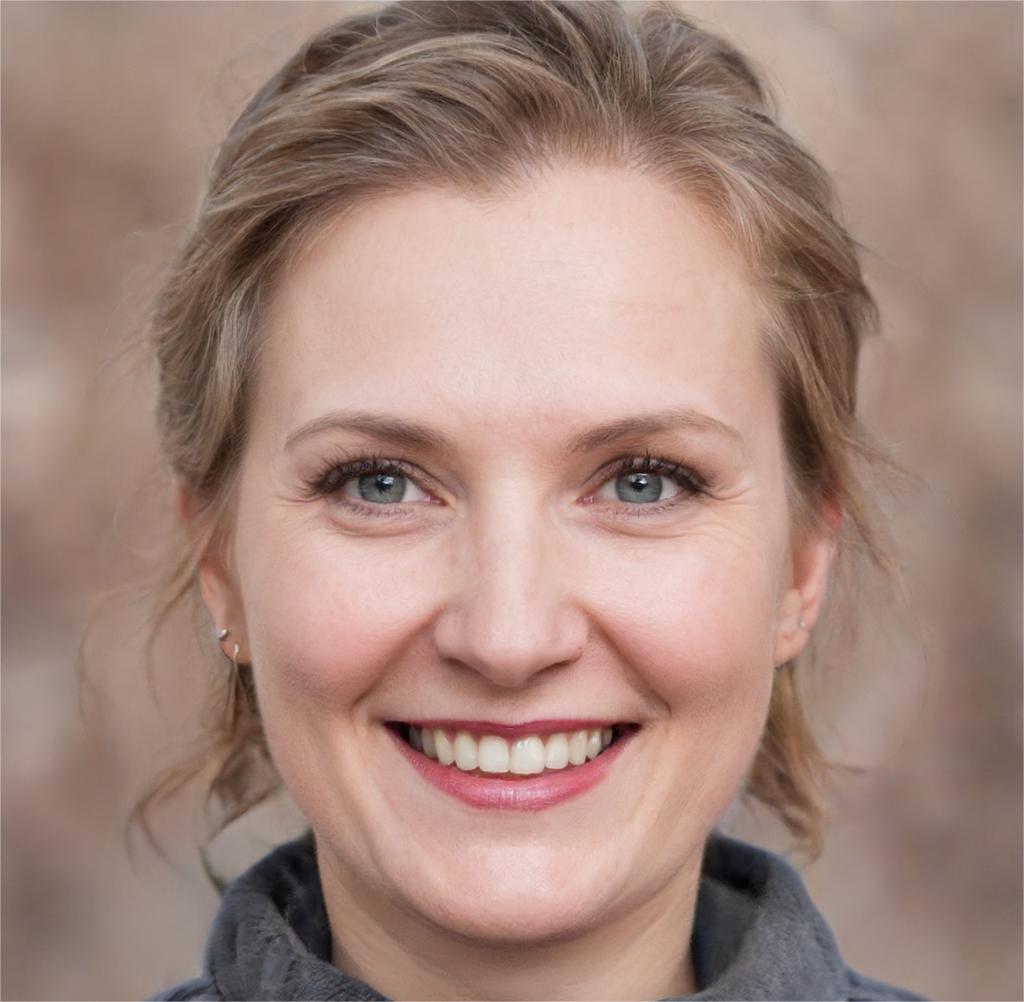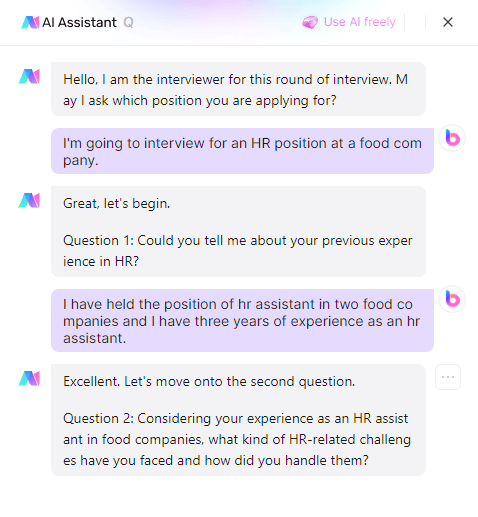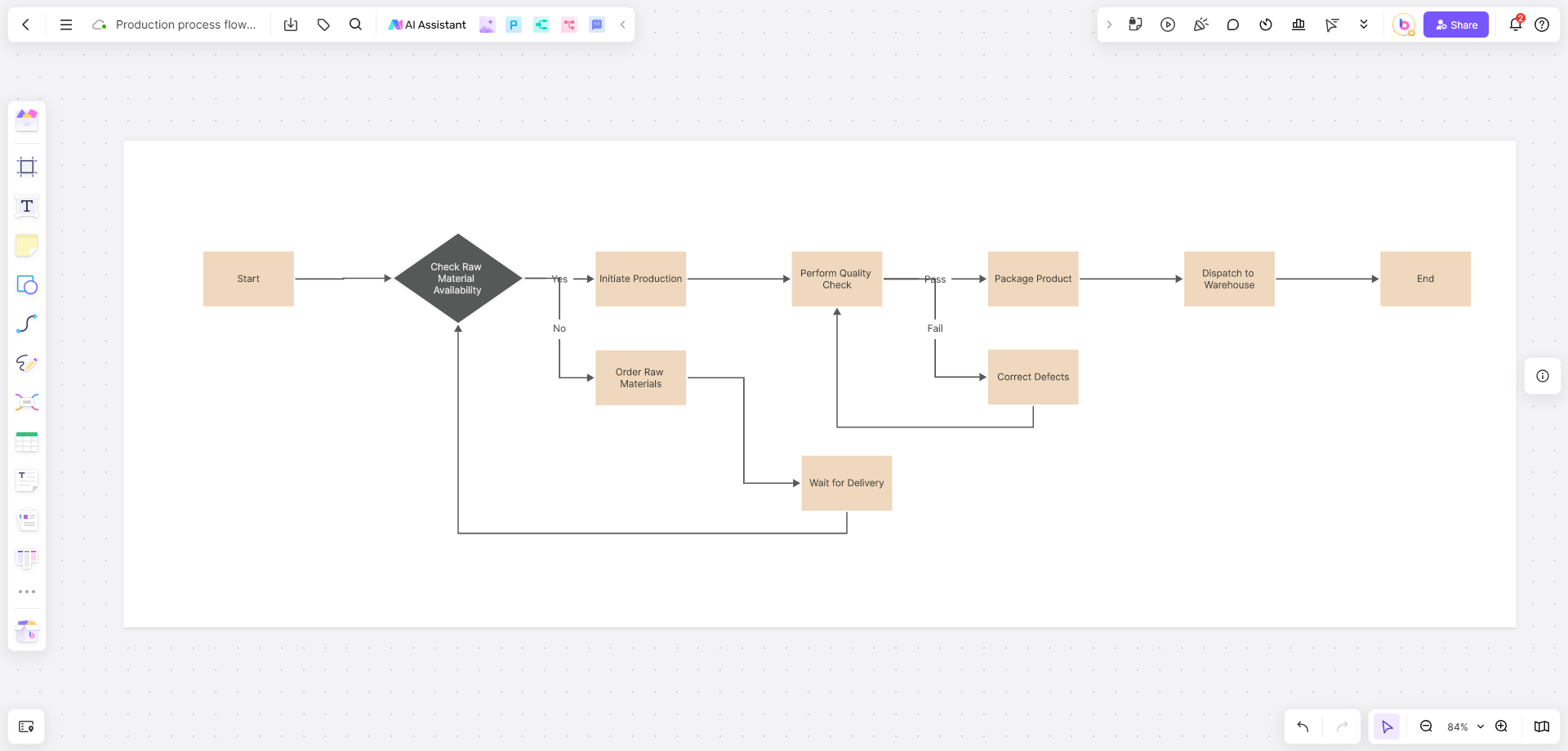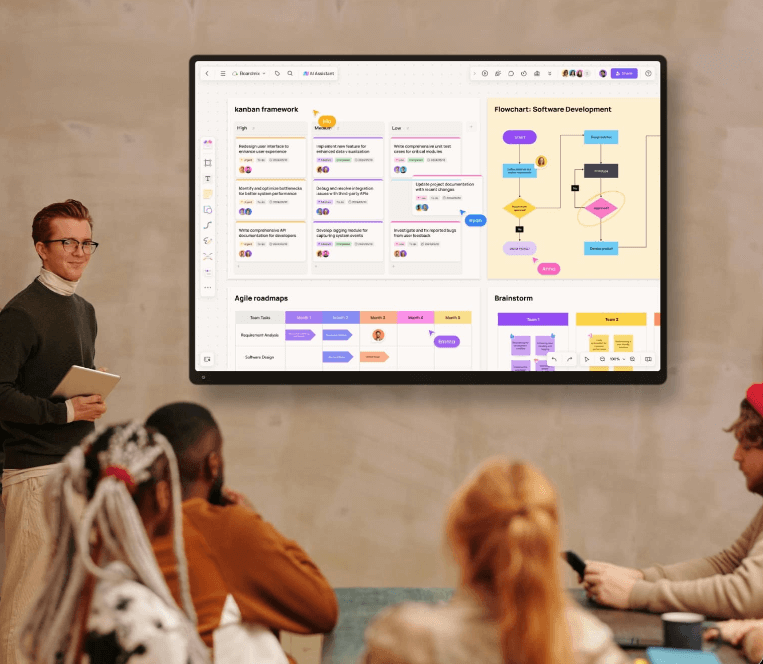Staying organized and on top of tasks becomes more crucial than ever in 2025. A well-designed calendar organizational map can be the key to achieving your goals for personal projects, team management and business operations. By mapping out key events, deadlines, and milestones, you can gain better visibility and control over your time. Let’s explore the best calendar organizational map for 2025, helping you streamline your planning process and stay on track throughout the year.
What is a Calendar Organizational Map?
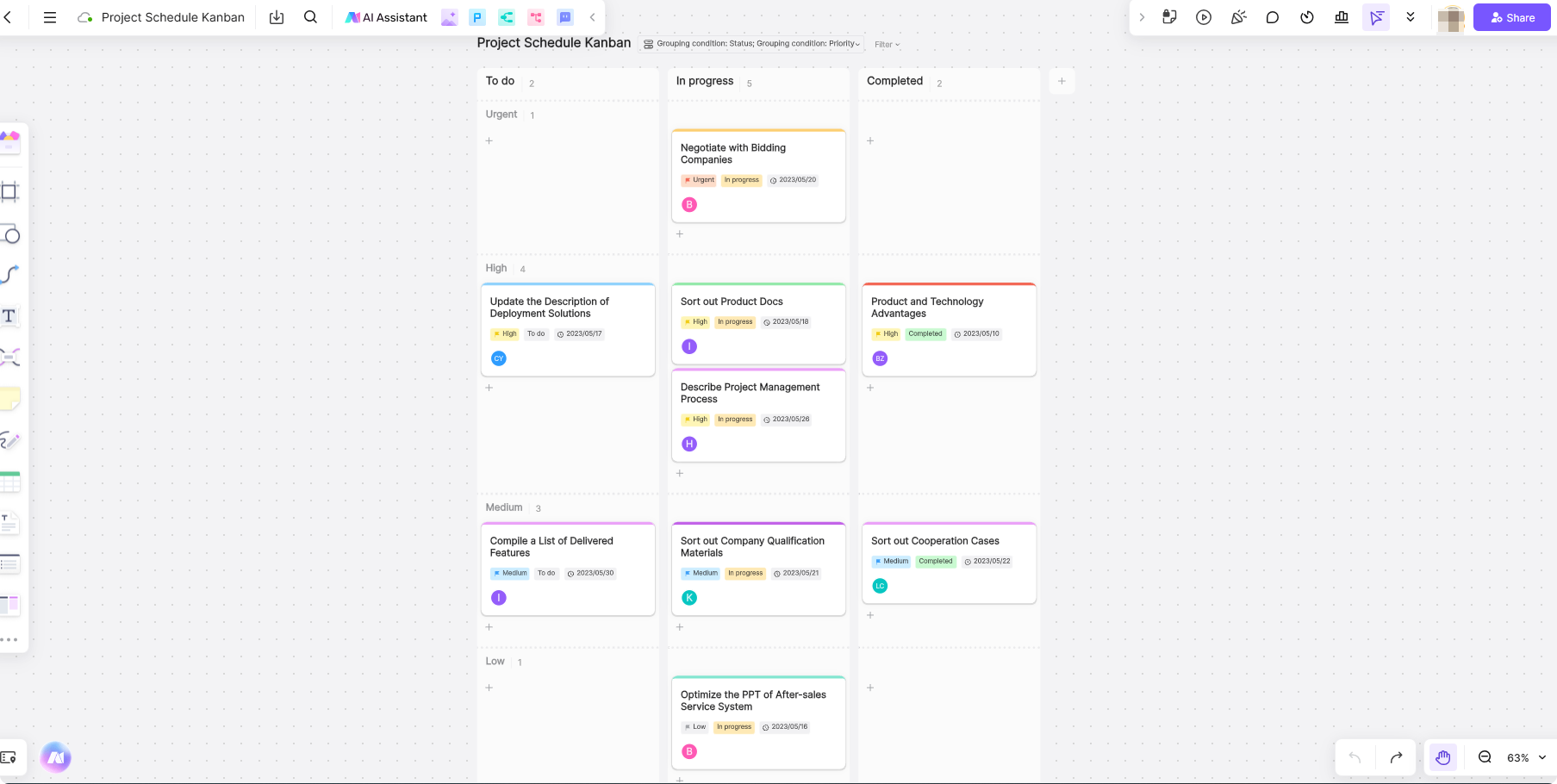
A Calendar Organizational Map is a visual tool designed to help individuals and organizations plan and organize their tasks, events, and goals over time. It provides a structured overview, enabling users to efficiently allocate resources and time. Key elements of a Calendar Organizational Map include time segmentation, prioritization, deadlines, flexibility, and goal alignment. These components work together to ensure smooth workflow, efficient task management, and the achievement of both short-term and long-term objectives. By using this map, one can maintain clarity, minimize confusion, and enhance productivity across various activities.
Essential Features of the Best Calendar Organizational Map
When looking for the best calendar organizational map for 2025, it’s important to focus on features that promote efficiency, adaptability, and ease of use. With numerous tools available, it's essential to choose one that best aligns with your needs. The following features will enhance the effectiveness of your map:
User-Friendly Interface: A simple, intuitive interface is essential for efficiency. The best calendar organizational maps for 2025 should have an easy-to-use interface that allows quick updates, easy navigation, and quick access to key information. Features like drag-and-drop scheduling, reminders, and task alerts can significantly improve usability.
Customizability: Personalization is crucial for creating a map that fits your unique schedule and style. The ability to customize colors, categories, and layouts allows you to tailor the map to your needs. No matter if it’s for business or personal use, a customizable calendar ensures that everything is clearly visible and easy to navigate.
Integration with Other Tools: The best calendar tools for 2025 will integrate with other essential applications. Integration with email services, task management apps, and communication tools helps streamline your workflow and keeps all of your important information in one place.
Collaboration Features: If you're working on group projects or managing a team, having the ability to collaborate on the calendar can save time and increase productivity. A shared calendar can help everyone stay on the same page, coordinate tasks, and meet shared deadlines.
By understanding the core features of the best calendar organizational maps and how they work together, individuals can effectively plan their days, track goals, and improve productivity in 2025.
6 Examples of Using Calendar Organizational Maps Across Different Fields
Calendar organizational maps are proving to be a versatile tool, applicable in a variety of fields. By integrating these maps into different industries, individuals and teams can streamline processes, improve efficiency, and stay on track with their goals. Below are six examples of how calendar organizational maps are being used effectively across different sectors.
- Education
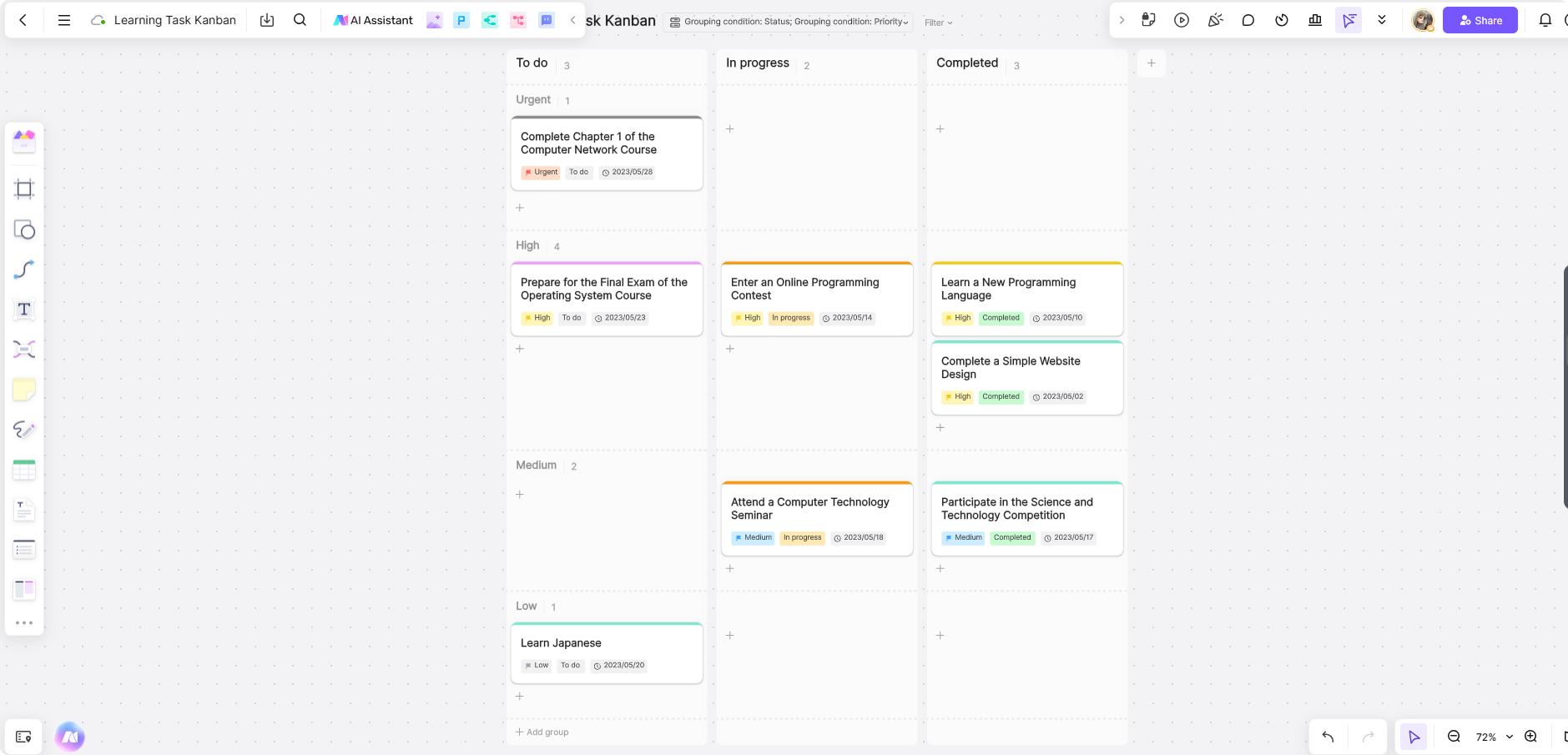
In the education field, the Calendar Organizational Map helps students and teachers effectively schedule courses, study plans, exams, and assignments, managing learning progress and avoiding last-minute task pressure.
Time Segmentation
- Divide time by semester, week, and day, allocating fixed study and revision times.
- Use time segmentation to ensure each task has enough time to be completed and appropriately arrange extracurricular activities.
Prioritization
- Prioritize tasks based on importance and urgency. For example, prioritize assignments due soon or exams that are approaching.
- Major tasks (such as final exams) will occupy more time and energy in the schedule.
Deadline
- Clearly list the deadlines for assignments, project reports, and exams.
- After setting deadlines, arrange tasks reasonably to avoid rushing near the deadline.
Flexibility
- Adjust learning time and plans according to personal progress and unexpected events (such as illness or urgent activities).
- Flexibility also helps to handle unexpected needs, such as extra revision time or emergency tasks.
Goal Alignment
- Each learning task aligns with semester goals and long-term career plans.
- Clearly set learning objectives (e.g., improving grades in a subject or mastering a particular skill), and align daily learning arrangements with these goals.
- Corporate Project Management
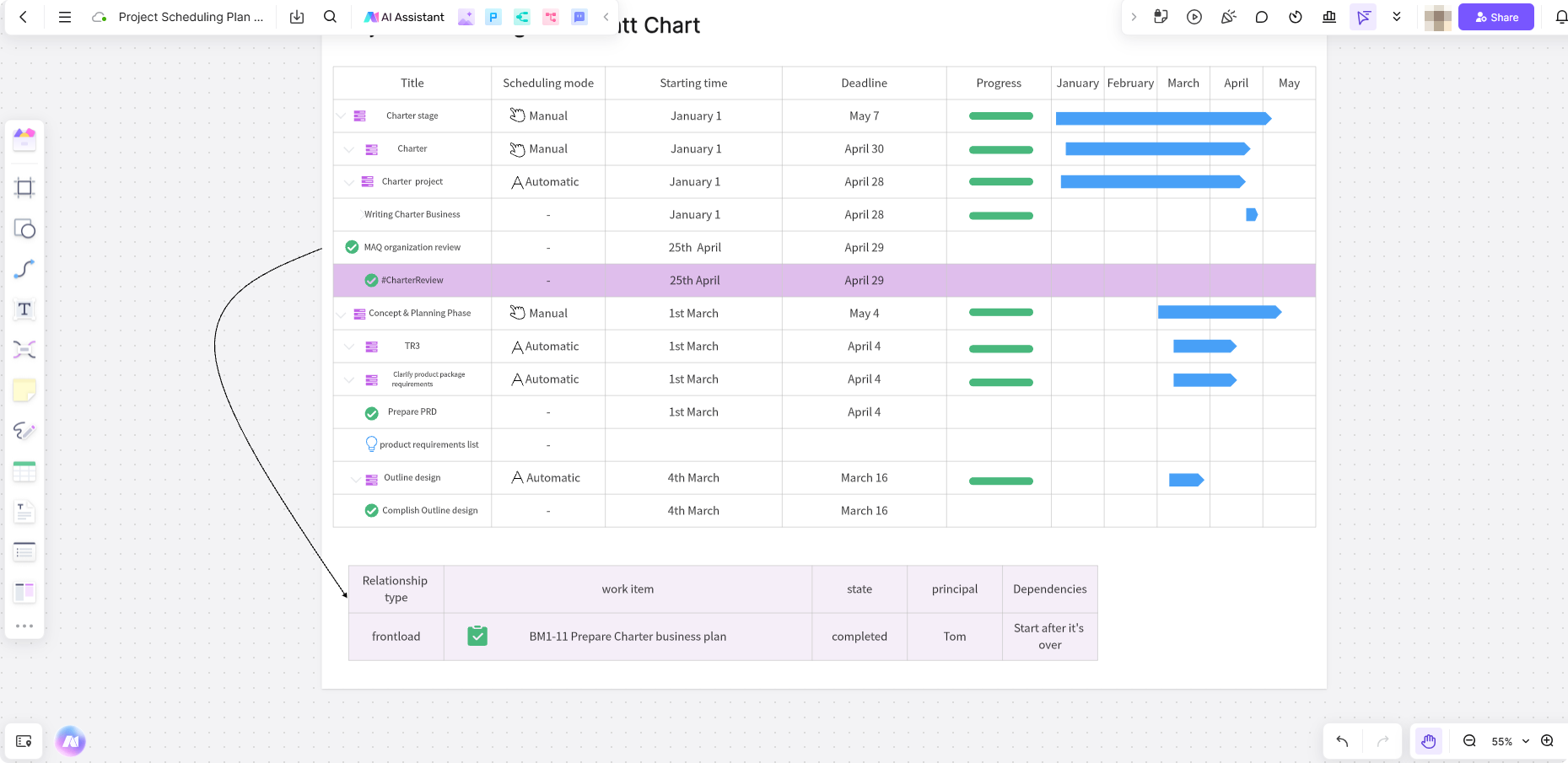
In corporate project management, the Calendar Organizational Map helps project managers and team members create task schedules, define key milestones, and ensure timely project delivery.
Time Segmentation
- Break down the project into phases, each assigned a specific time frame.
- Schedule tasks by week or month, setting a time frame for each project phase.
Prioritization
- Prioritize tasks based on urgency and their impact on the project's success.
- For example, the initial stages of the project, such as requirement analysis and resource allocation, are often prioritized over later stages like fine-tuning details.
Deadline
- Set specific deadlines for each phase and task to ensure timely project progression.
- The completion time of each task should be clearly marked to avoid delays affecting the entire project.
Flexibility
- If the project progresses slower than expected, flexibility can help adjust schedules or reallocate resources when issues arise.
- Allow team members to adjust task order or time frames when unforeseen circumstances occur.
Goal Alignment
- The project plan should always align with company strategic goals, ensuring that each task’s completion positively impacts the overall business.
- Goal alignment ensures that the final delivery of the project meets client or internal team expectations.
- Healthcare Scheduling
In healthcare, the Calendar Organizational Map allows doctors and hospital administrators to efficiently schedule patient appointments, surgeries, and health checks, ensuring maximum resource utilization.
Time Segmentation
- Schedule doctor and patient appointments by hour or day.
- Precisely allocate time for each stage of the medical service process to ensure timely treatment for patients.
Prioritization
- Prioritize urgent patients or those requiring emergency surgery.
- Schedule less urgent cases (such as routine check-ups) during quieter time slots to avoid interfering with critical tasks.
Deadline
- Set timelines for patient treatment plans and tests, ensuring each stage of the medical process is completed on time.
- Ensure all medical processes (e.g., appointments, tests, and surgeries) are completed as planned.
Flexibility
- Adjust other schedules and resource allocations flexibly when emergency cases or urgent situations arise.
- Allow flexibility in adjusting doctors' rest periods to handle emergencies.
Goal Alignment
- Healthcare goals, such as improving patient satisfaction, reducing waiting times, and providing efficient treatment, must be integrated into the scheduling.
- Each task and activity aims to enhance treatment quality and patient health.
- Content Creation and Social Media Management
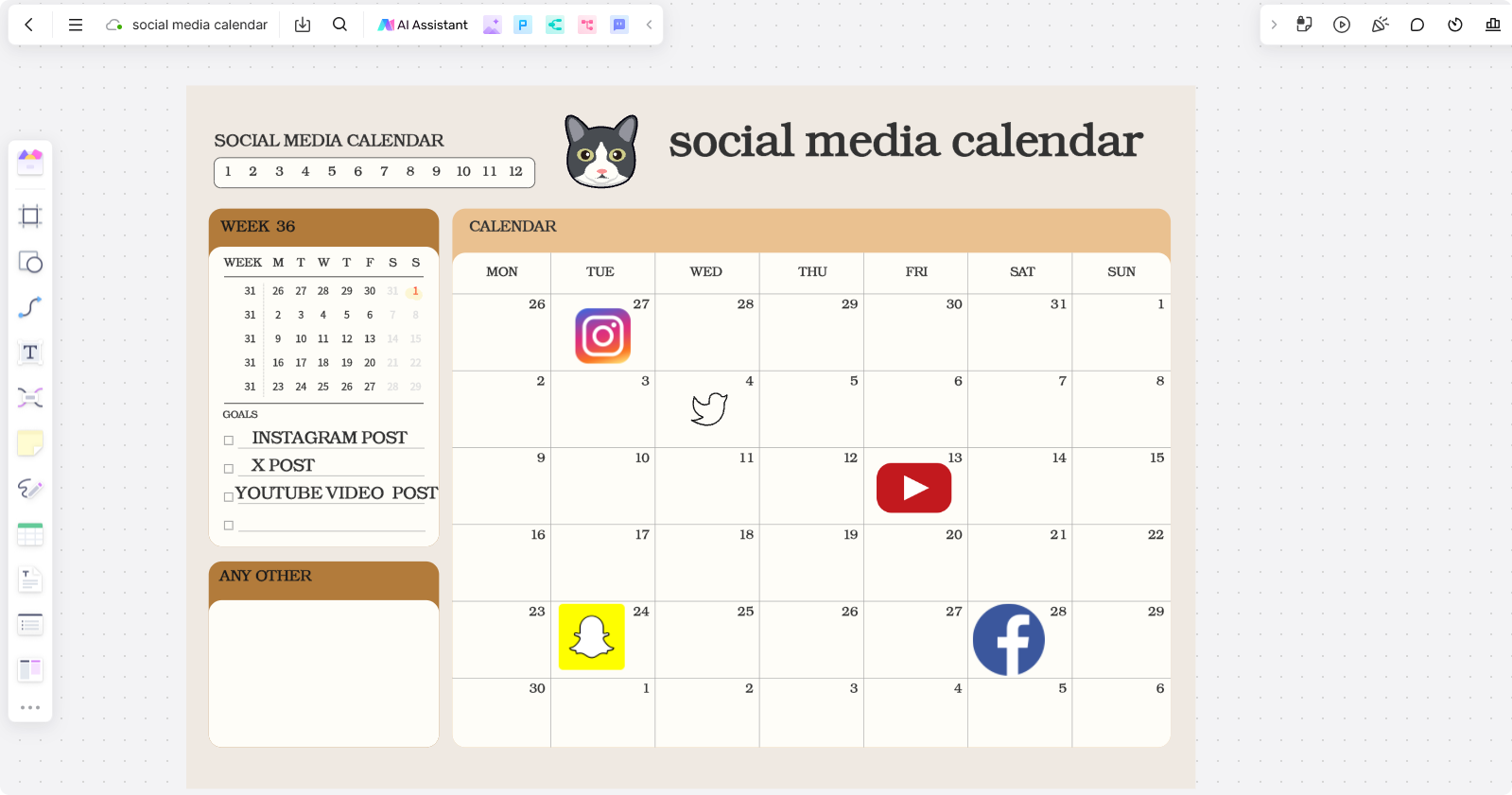
Content creators and social media managers use the Calendar Organizational Map to plan content release, interaction times, and marketing activities, maintaining consistency and efficiency.
Time Segmentation
- Clearly allocate time slots for content creation and release.
- Set daily, weekly, or monthly publishing periods to ensure continuous content updates.
Prioritization
- Prioritize the most popular or urgent content to attract audience attention.
- Schedule the release of trending activities or advertisements to respond promptly to hot topics or trends.
Deadline
- Set clear release dates for social media posts, videos, or advertisements.
- Define internal submission and review deadlines to ensure timely publication.
Flexibility
- Content creation and release often need to adapt to sudden trending events or topics, so leave room for flexible adjustments.
- Allow for changes during content creation based on feedback.
Goal Alignment
- Ensure all content creation and publishing activities align with branding or marketing objectives.
- Regularly evaluate content performance to ensure goals are continuously adjusted and optimized.
- Personal Goal Tracking
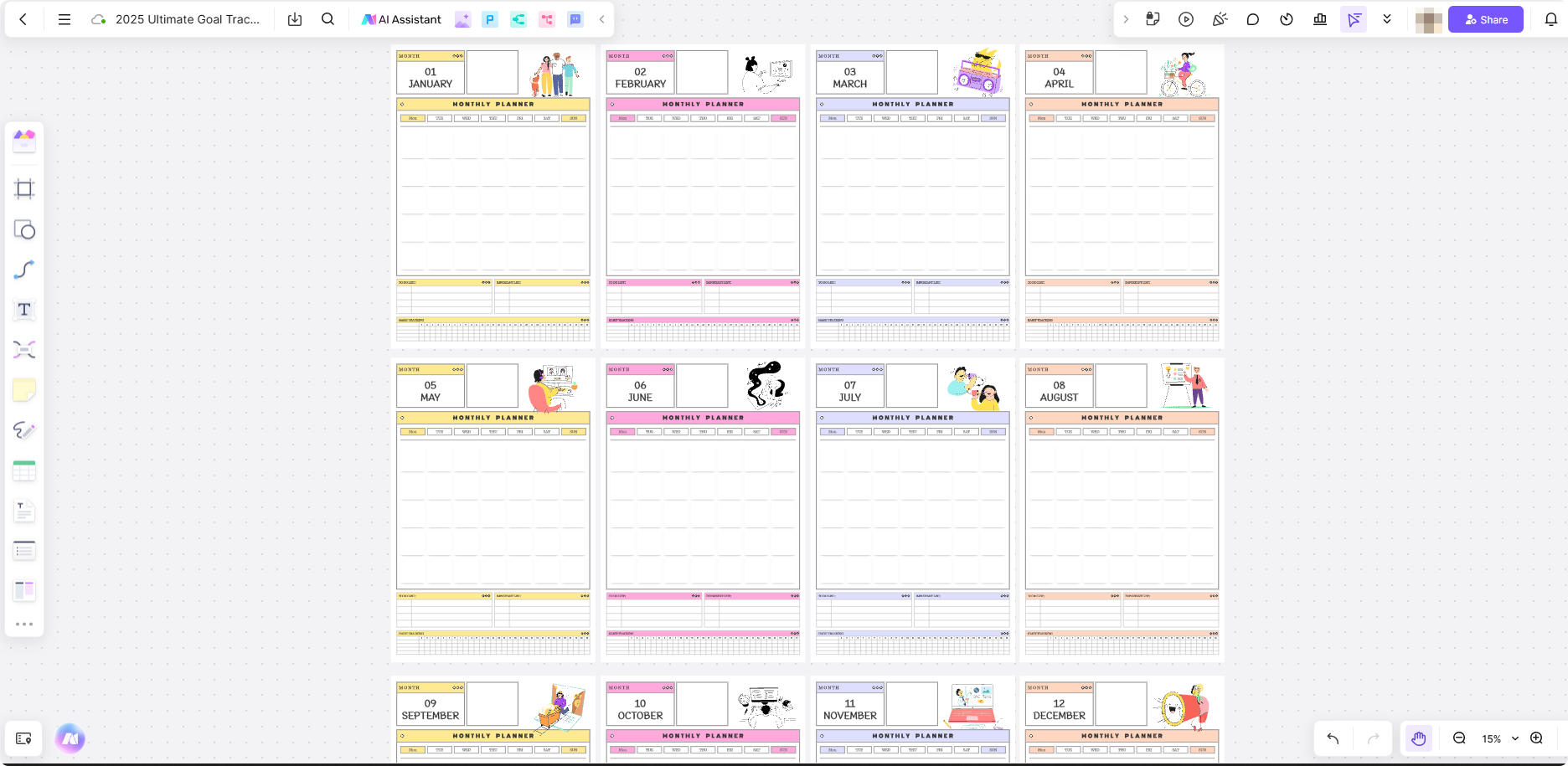
Individuals use the Calendar Organizational Map to track progress on personal goals such as fitness, study, and finance, maintaining long-term motivation and achieving goals.
Time Segmentation
- Schedule health-related activities, exercise, or study plans by day or week, ensuring each activity has a set time slot.
- Set clear timeframes for each personal goal to avoid procrastination.
Prioritization
- Arrange tasks based on the urgency and importance of personal goals.
- For example, short-term health goals (such as weight loss) might take precedence over long-term career development goals.
Deadline
- Set specific completion dates for each goal, helping track progress regularly.
- For example, set weekly or monthly mini-goals to assess progress.
Flexibility
- Allow flexibility in adjusting goals and schedules when unforeseen life events occur.
- Provide adequate space for flexibility to avoid abandoning goals under excessive stress.
Goal Alignment
- Ensure all activities and tasks align with long-term personal goals, such as health, financial, or study plans.
- Each small goal contributes to achieving the larger objective.
- Nonprofit Organization Campaigns
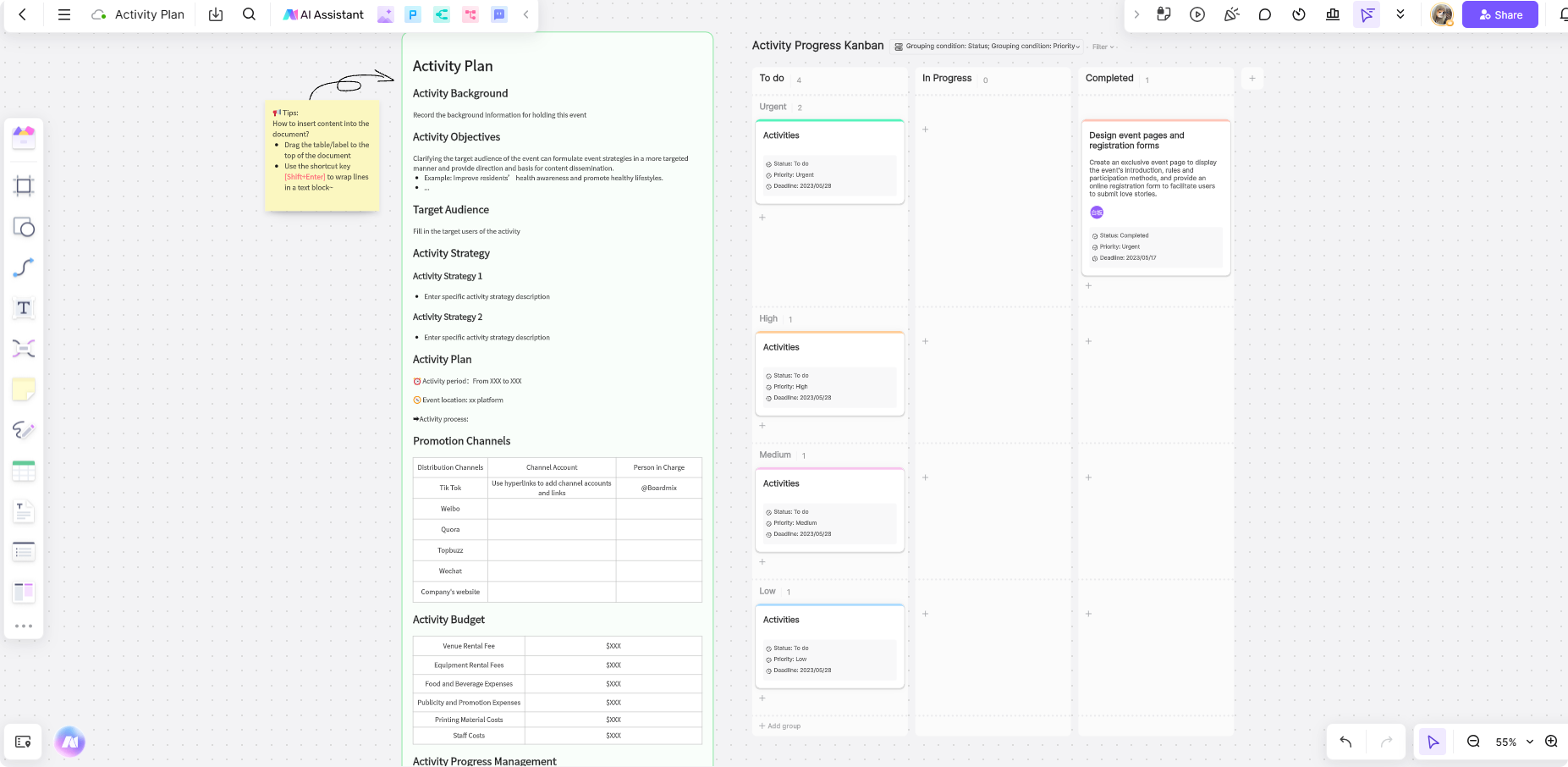
Nonprofit organizations use the Calendar Organizational Map to manage fundraising, volunteer activities, and promotional events, ensuring the campaigns run smoothly.
Time Segmentation
- Schedule specific time slots for fundraising, community events, etc., ensuring smooth event flow.
- Assign clear time points for each activity to avoid overlaps or conflicts, allowing each task to have dedicated attention and resources.
- Activities like meetings with donors, volunteer training, and event setup should each have a specific time block to prevent scheduling issues.
Prioritization
- Prioritize tasks based on urgency and significance to ensure the most important activities are completed first.
- For example, preparing for key fundraising events is prioritized over routine administrative tasks to ensure the campaign's success.
- The most critical activities, like fundraising deadlines or important community outreach events, take precedence in the schedule, while smaller tasks can be adjusted as needed.
Deadline
- Set specific deadlines for each fundraising event and volunteer activity to ensure timely completion.
- Deadlines for campaign milestones, such as reaching fundraising goals or securing partnerships, should be clearly mapped out to guide the organization’s efforts.
- Ensure event setup and promotional activities align with the timeline to maximize participation and engagement.
Flexibility
- Flexibility is essential in nonprofit campaigns as unexpected changes, such as weather conditions or volunteer availability, can arise.
- Adjustments can be made to the schedule to accommodate new opportunities or address unforeseen circumstances, ensuring continued progress toward goals.
- Allowing buffer time for key activities, like campaign kick-offs or thank-you events, ensures they remain successful despite any disruptions.
Goal Alignment
- Ensure every activity and campaign aligns with the nonprofit's mission and long-term objectives, such as raising awareness or achieving financial goals.
- The schedule should reflect the larger goals of community engagement, donor retention, and impact measurement, ensuring that all actions contribute to the overall mission.
- Regular assessments and adjustments ensure that the campaign stays on track and continues to serve the nonprofit’s vision.
Tips for Creating a Calendar Organizational Map on Boardmix
Boardmix is an online whiteboard that enhances team collaboration through an intuitive visual space. It offers a variety of templates like calendar organizational maps, flowcharts and mind maps, making it easier to organize ideas and plan projects. With AI tools to streamline workflows and real-time collaboration features, Boardmix helps teams communicate and work more efficiently, boosting productivity and innovation. Boardmix's Calendar Organizational Map is an excellent tool for helping teams stay organized and on track throughout the project's lifecycle. Below are some practical tips to make the most of the calendar features.
- Start with a Template Tailored to your needs
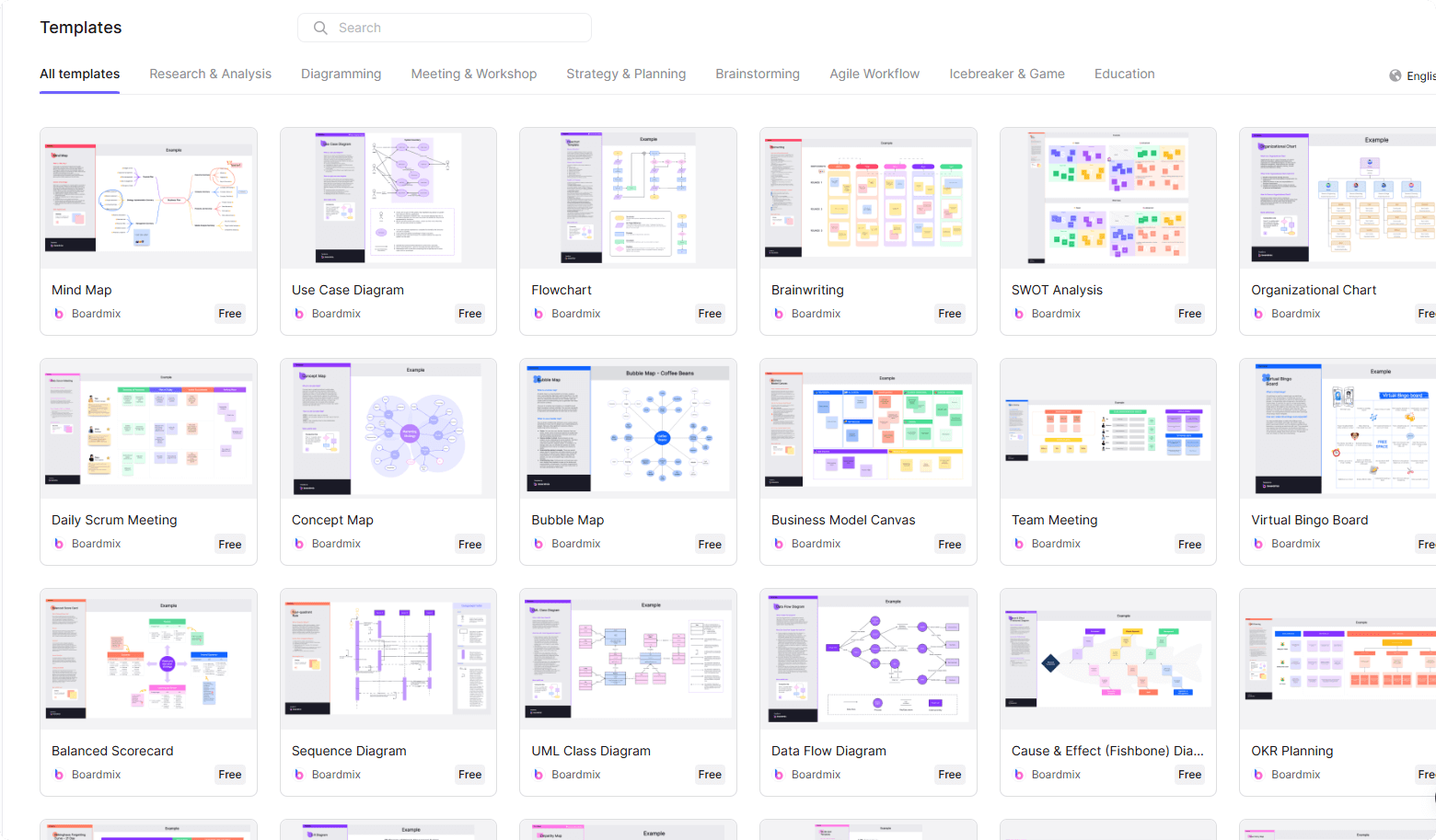
When beginning a project, it’s important to break down the timeline into manageable phases. Use Boardmix’s pre-built templates to map out key stages, from planning to execution to final review. These templates can help you set the foundation for your project calendar.
- Color Code Tasks and Use Labels for Easy Tracking
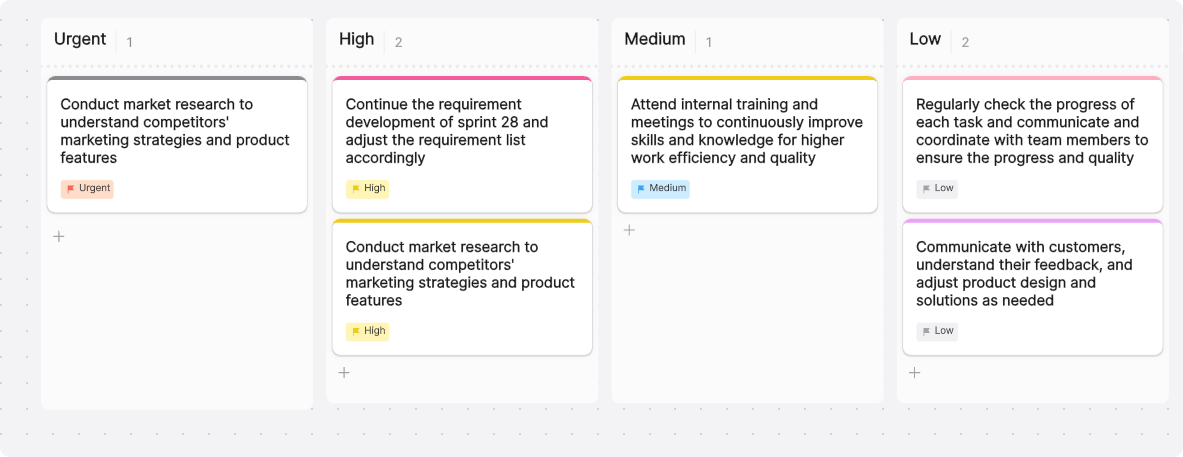
To make it easier to differentiate between various types of tasks, utilize color coding and labels for each task within the calendar map. Color coding tasks can help you quickly identify critical deadlines, less urgent tasks, and milestones.
- Set Clear Milestones and Deadlines
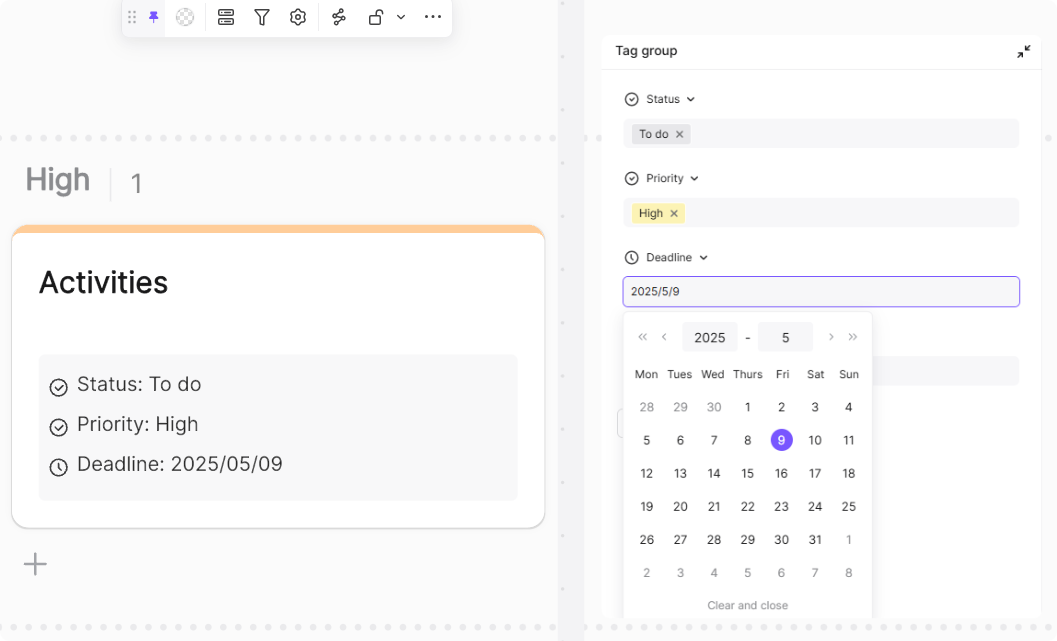
Milestones are essential to track progress and measure the success of a project. When creating your calendar organizational map, make sure to set clear milestones for every phase of the project. These milestones act as checkpoints, allowing you to assess the team’s progress. Make sure each milestone has a corresponding deadline, and review them regularly to ensure the project is on track. Boardmix’s customizable calendar allows you to set these milestones and deadlines visually, making it easy to see when goals are met and what’s left to be done.
- Collaborate in Real-Time for Seamless Updates
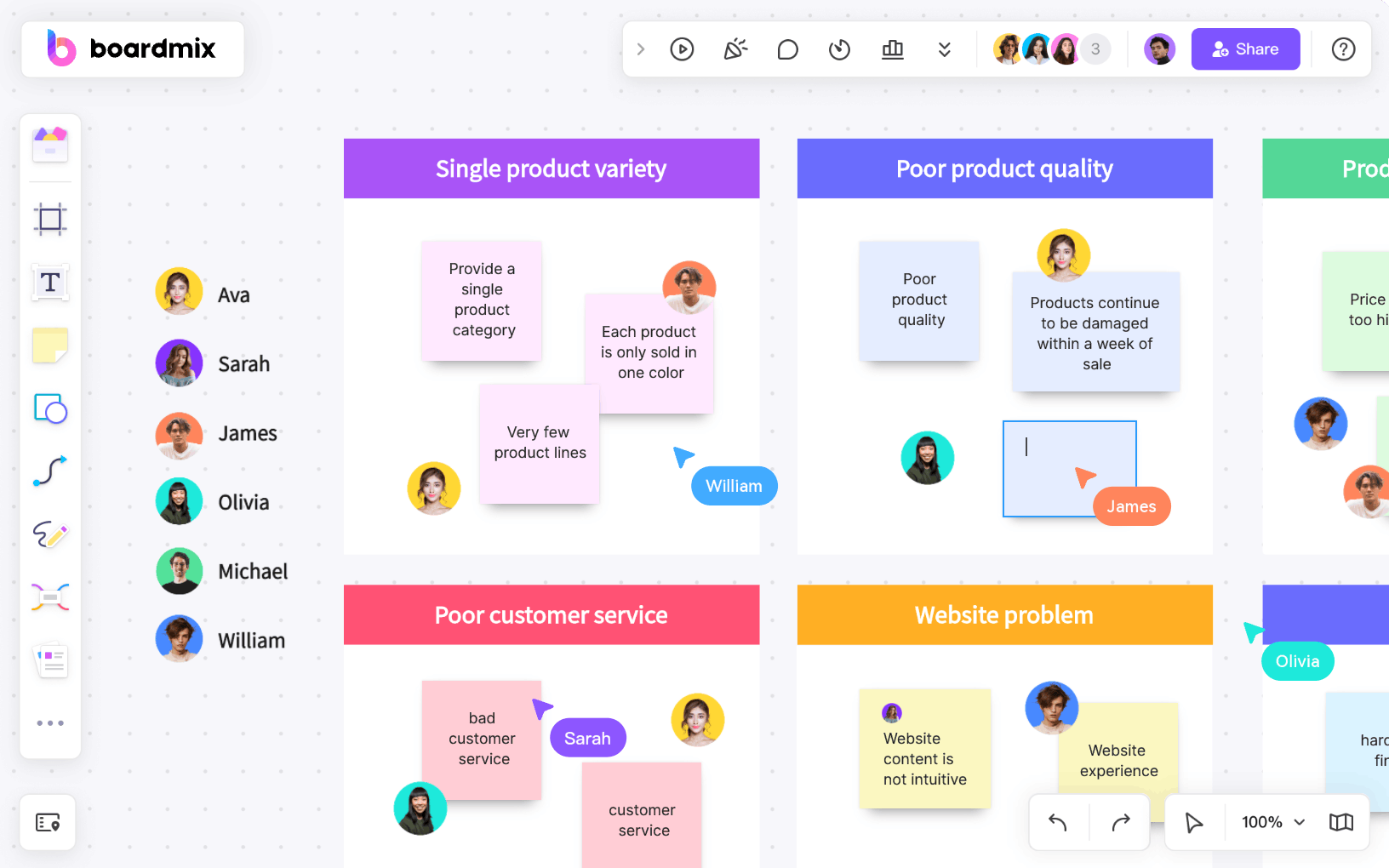
With Boardmix’s real-time collaboration features, you can stay synchronized, even when working remotely. As tasks progress, team members can update their status directly within the calendar, ensuring that everyone is aware of the latest developments.Encourage your team to update their tasks and milestones in real-time. If a team member completes a task or encounters a delay, they should immediately mark the task as completed or update the task status. This provides visibility for the whole team, enabling quicker responses to any challenges or delays.
By following these tips, you can create an effective Calendar Organizational Map on Boardmix that will help your team stay aligned, manage deadlines, and track project milestones with ease. Whether you're managing a large-scale initiative or a smaller team project, Boardmix offers the tools you need to keep things running smoothly and efficiently.
Final Thoughts
Creating an effective calendar organizational map is essential for staying organized and achieving your goals in 2025. A calendar template can be effective across multiple fields, helping you prioritize, meet deadlines, and align your actions. Boardmix is an excellent tool to help you create and manage your calendar organizational map, thanks to its variety of templates, including customizable calendar templates, and its real-time collaboration features. Make 2025 your most organized and successful year by utilizing Boardmix to create a calendar organizational map that suits your needs.



